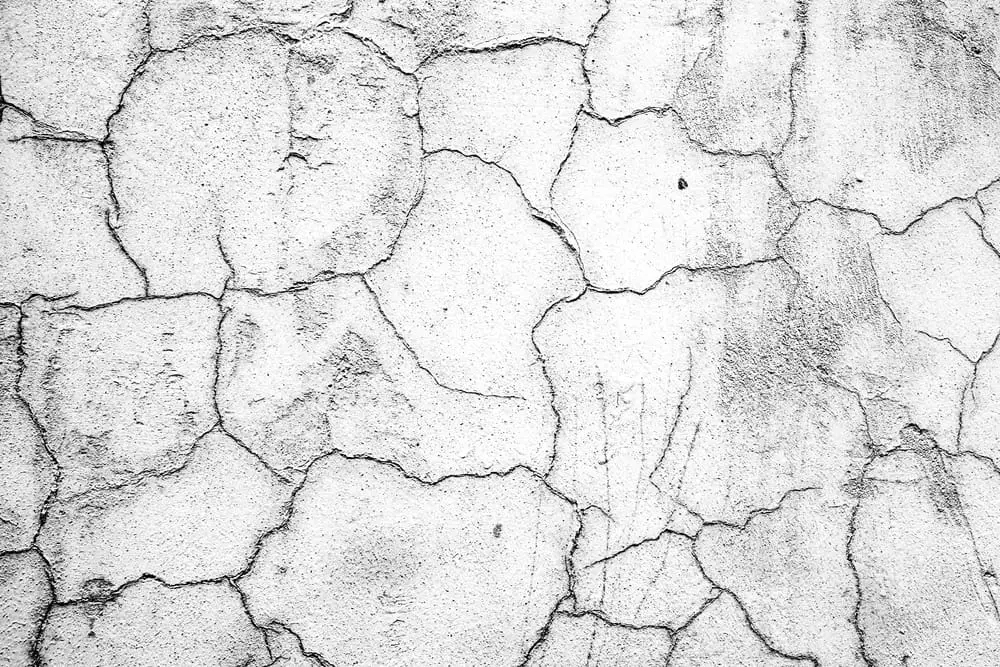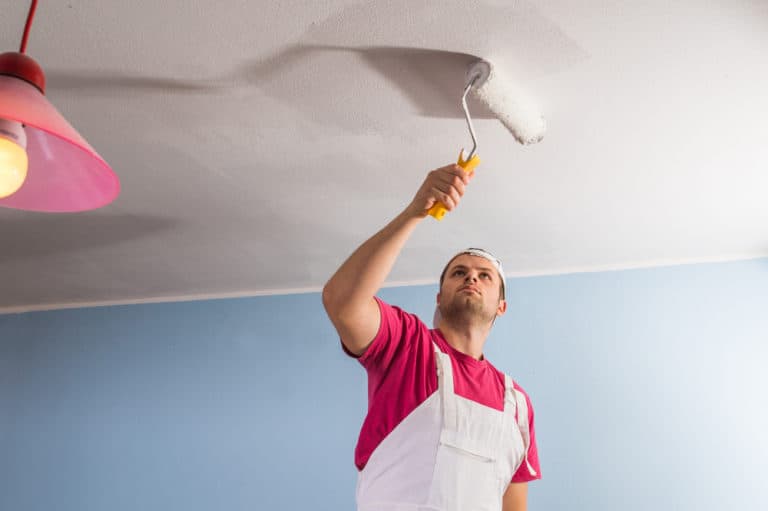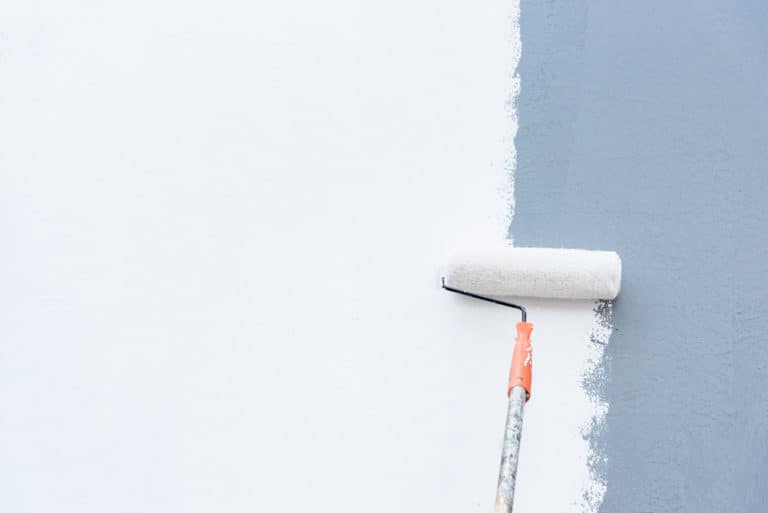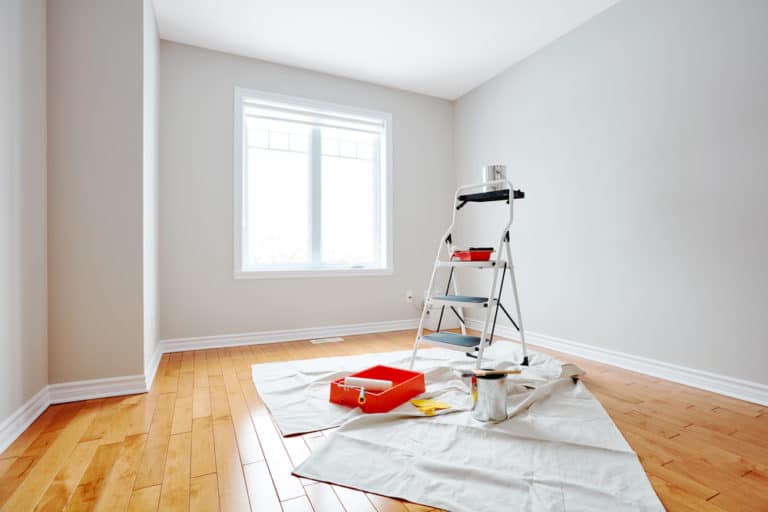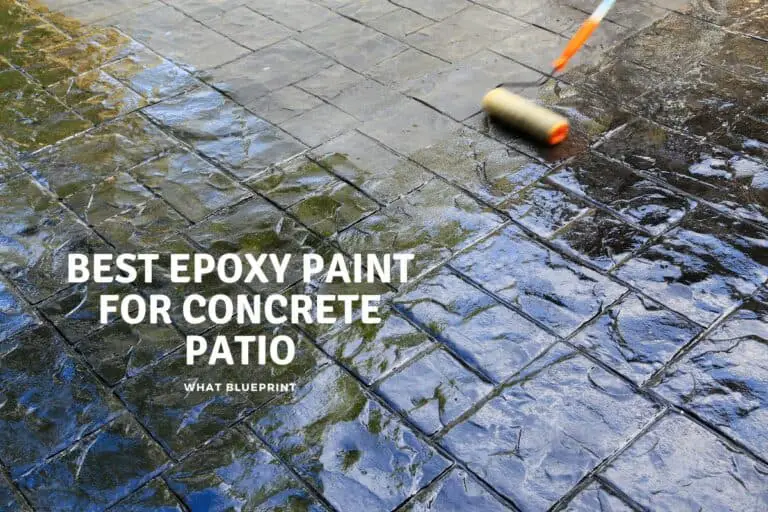Can You Paint Over Concrete Cracks?
Concrete provides structures with stability, rigidity, durability, and resilience from deformation. However, several factors continuously work against your concrete: foot traffic, machinery, moisture intrusion, age, etc. The factors result in concrete structures lacking the elasticity to move in response to environmental or volume changes. Cracking is typically the first sign of distress in concrete. The cracks are a mere nuisance when you considering giving your home a fresh coat of paint. Now, can you paint over concrete cracks?
It is possible to paint over concrete cracks but not with any ordinary paint. During your home improvement project, you can use concrete-crack paints such as epoxy patches, polyurethane, or latex paints. They are specially formulated to bond with the concrete surface so that it doesn’t peel off.
These paints are highly adhesive and prevent water from penetrating the surface to avoid the formation of more cracks in the future. They also provide a protective barrier against moisture infiltration and chemical attack, which can weaken the integrity of your concrete over time.
Leading Causes of Concrete Cracks
When you install concrete correctly, it is one of the most durable and long-lasting products you can use around your home. At times the cracks do not happen by accident. Let’s see what causes concrete cracks.
- Shrinkage– Shrinkage cracks happen because concrete is porous. They develop when water evaporates from the surface of capillary action draws moisture into the pores of the concrete. As this happens, it creates a volume change which results in stress and cracking on your slab surface. The severity depends on how quickly these volumes changes occur.
- Poor Curing-If you do not maintain the proper moisture content in the slab, it can cause rapid drying and crack once exposed to environmental changes like wind or rain.
- Old Age-After decades of use and exposure to environmental factors, aging-concrete structures such as bridges and sidewalks start showing signs of distress.
Painting Over Concrete Cracks
The concrete cracks might seem like tiny hairline fractures that do not pose much danger to your slab. However, even the most minor crack can let moisture and other pollutants seep through, which is why it needs patching and filling before applying a fresh coat of paint on top.
Patching Cracks in Concrete Before Painting
You can patch and fill small cracks using masonry crack elastomeric filler applied with a caulking gun. For tiny cracks, such as hairline cracks, you can use vinyl concrete patching compound applied over the crack and then flattened with a putty knife or trowel.
Sometimes applying repair caulk or crack filler over the cracks is ineffective, as the caulk tends to peel off the surface over time. If the small cracks are deep, it’s good to start the repair by filling a foam backer rod into the crack to make a base to hold the repair material. Shove the backer rod into the crack with a screwdriver to a depth of 1/4 inch, then fill the crack with the repair material, following the manufacturer’s directions. Once you apply it, allow at least 24 hours for the filler to dry before applying paint over them.
For the broader cracks, you can use crack filler, a putty-like material with much more elasticity. It expands and contracts without cracking under stress making it an excellent choice to fill the cracks before painting your concrete floor. The secret to patching wide concrete cracks is to chip the sides of the crack with a cold chisel to give it an upend “V” shape. It helps the repair material key into the crack, designing a mechanical bond and the chemical bond linking the patch material and the concrete. Smooth out any ridges with your trowel or putty knife, then allow it to dry for at least 24 hours.
Filling Cracks in Concrete Before Painting
Concrete crack sealants and caulks are the most common product used to fill cracks in concrete. They come in squeeze tubes and can be applied right into the crack with a caulking gun. Caulk is usually best for vertical cracks, while crack sealants are better suited for horizontal or diagonal fissures on your concrete floor.
Caulks and sealants used to fill concrete cracks come in two basic types: latex-based products that dry into flexible rubber but can be messy to work with and polyurethane products that are exceptionally durable but hard to apply.
Simple DIY Guide of Filling the Concrete Cracks
- Sand and vacuum the surface thoroughly before filling cracks to get rid of any loose debris and dust.
- Using a caulking gun, apply the crack filler into the cracks. Smooth out the surface with your putty knife, making it level with surrounding areas for an even appearance.
- Apply primer to the newly filled cracks to create a smooth surface for Painting. Allow the primer to dry perfectly before applying paint over it.
- Apply Epoxy paint over the cracks to ensure it stays sealed. Use a paintbrush or roller and provide an even coat of epoxy, making sure that you get into all corners and edges where dirt accumulates over time.
- Apply masonry sealer over the cracks to protect them from moisture and dirt build-up.
- Allow it dry for a minimum of 48 hours before walking on the surface.
Painting over concrete cracks makes them less noticeable and improves the aesthetics of your floor, wall, or ceiling.
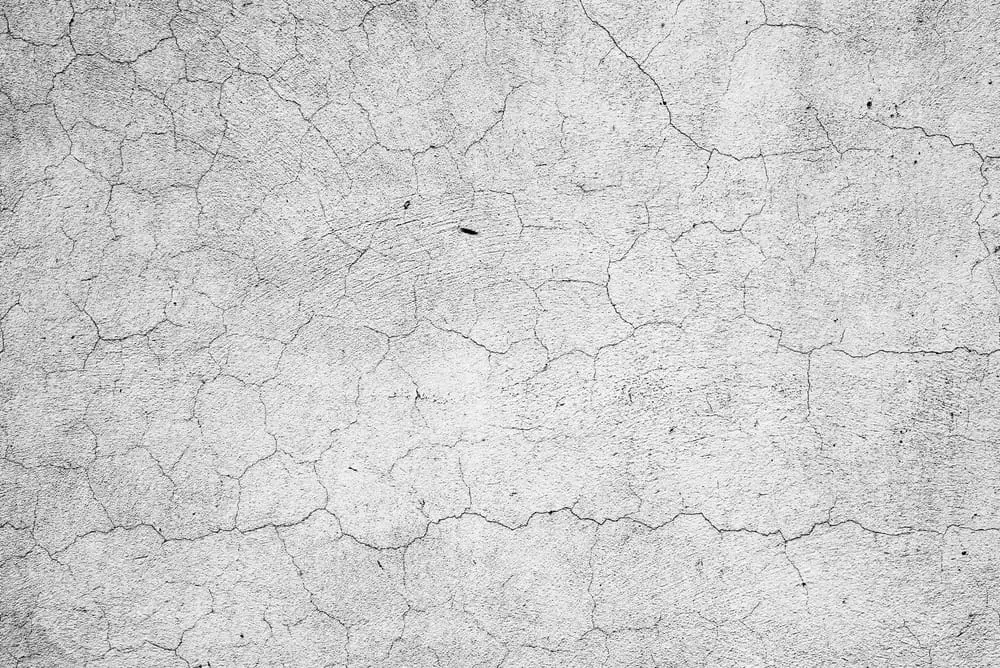
6 Best Paints in Covering Concrete Cracks
There are various types of paints used to cover concrete cracks. It all depends on how much you want to spend and the kind of coverage you need for your concrete crack.
- Polycell Crack-Free Interior Paint – The crack-free paint is excellent for covering cracks with ease. The flexible range of polycell paint covers cracks and stops them from coming back using Polyfilla technology. The paint is simple to apply and dries quickly.
- Tremclad – Tremclad is a high-quality, acrylic-based exterior masonry paint with excellent coverage of concrete cracks. It provides long-lasting results that resist cracking and peeling for years after being applied. Manufacturers design the crack filler used in this paint to fill deep holes or cracks where it is difficult for other paint to get.
- Epoxy Based Paint-The right epoxy system will allow you to transform your concrete cracks from unsightly eyesores to a thing of beauty. Epoxy paints offer a tough, durable protective coating that’s effortless to maintain. Because of its unique effects, epoxy paint is corrosion-resistant, resistant to chemicals, and simple to clean – making it ideal for garages or warehouses where oil, grease, or other harmful substances spill on the floor.
- INSL-X Sure Step is a two-component polyurethane coating used to fill cracks up to 25mm wide. The kit comes with an aggregate material that you pour into the crack and then mix before applying it evenly along its length. Once dry (usually overnight), this creates a surface like concrete with larger aggregates in place of the smaller ones.
- Kilz Decorative Concrete Paint-The Kilz decorative concrete paint is a water-based, low odor and highly durable latex epoxy blend designed to resist oil stains and scuffs. It can be applied directly onto cured concrete surfaces in one even coat without the need for primer. Easy to use concrete paint fills in hairline cracks and stands up to dirt and grease.
- DAICH RollerRock– It is a solvent-free epoxy paint with excellent adhesion properties. The product dries to touch in 60 minutes. It provides an elastic coating used for flooring, stairways, and garage floors. Experts designed it to help preserve concrete while giving it a smooth finish with good slip resistance.
Conclusion
A fresh coat of paint spruces concrete cracks in walls, floors, and ceilings bringing new life to worn concrete. Concrete paints help to mask the surface discoloration and signs of wear and tear, and they lengthen the life of the concrete by preventing further damage. So, you can paint over concrete cracks for a quick fix or on large cracks.
Sources
- https://findanyanswer.com/can-you-paint-over-concrete-crack-filler
- https://www.amazon.com/dp/B07KXND9SX?tag=aboutcom02thespruce-20&linkCode=ogi&th=1&psc=1&ascsubtag=4580558%7Cn517a7dbee6a64e10b96b9dfbb345fd6c03%7CB07KXND9SX
- https://www.amazon.com/dp/B07BF4MTXJ?tag=aboutcom02thespruce-20&linkCode=ogi&th=1&psc=1&ascsubtag=4580558%7Cn517a7dbee6a64e10b96b9dfbb345fd6c03%7CB07BF4MTXJ
- https://www.concretenetwork.com/concrete/concrete_cracks/preventing_concrete_cracks.htm
- https://www.mymove.com/painting/guides/epoxy-paint/
- https://www.jtatkinson.co.uk/polycell-crack-free-ceilings-smooth-2-5l-matt

